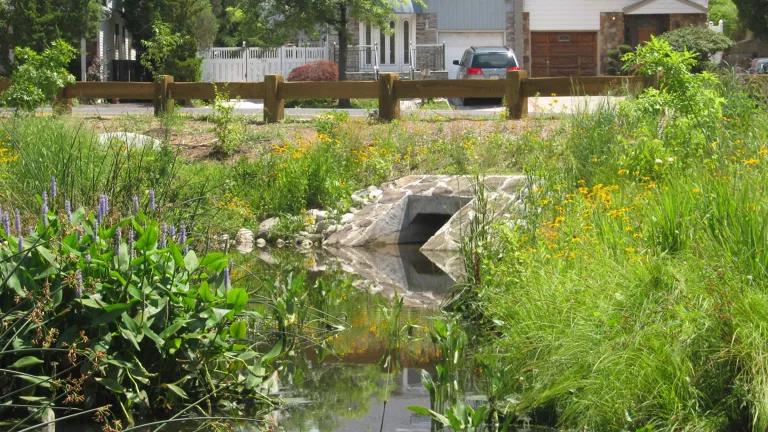6 Cities That Are Ready for Climate Change
These urban-planning projects prove that embracing nature's own tools can sometimes provide the best defense against drought and flood.

New York City: Staten Island Bluebelt Drainage Basins
This system of strategically placed wetlands over 14,000 acres temporarily stores and filters 350,000 gallons of stormwater—up to 1.75 inches of rain per hour. By protecting and beefing up natural drainage corridors, such as streams and ponds, Staten Island is saving more than $80 million in sewer costs.

Los Angeles: The Rio de Los Angeles State Park
Along with naturally filtering stormwater runoff, the restoration of this park's natural wetlands has given residents new hiking trails surrounded by thriving native plants and wildlife.

Chicago: Green Roof Program
The Windy City's commitment to runoff-reducing green roofs is among the most ambitious in the nation, with nearly 500 plots totaling more than 5.5 million square feet. The effort began in 2001 with the planting of a 20,000-square-foot garden atop City Hall.

Philadelphia: Green City, Clean Waters
Under this plan, Philadelphia will invest $2.5 billion in green infrastructure, including turning nearly 10,000 acres of cement or asphalt into permeable surfaces. This will allow up to an inch of stormwater to seep into the ground instead of running down drains and into the city's water supply.

Portland, Oregon: Green Streets
Curbside rain gardens and planters have cut more than 80 percent of stormwater runoff while saving the city millions of dollars in upgrades over the last decade. Portland also has an Ecoroof policy, which means that all new city-owned buildings and municipal roof-replacement projects must involve green roofs.

San Antonio: The Tree Challenge Program
The city aims to plant 450,000 more trees to help slow down and filter stormwater (so less of it runs over dirty streets and sidewalks and into the water supply). The additional tree canopy will also help cool the city and improve air quality.
This NRDC.org story is available for online republication by news media outlets or nonprofits under these conditions: The writer(s) must be credited with a byline; you must note prominently that the story was originally published by NRDC.org and link to the original; the story cannot be edited (beyond simple things such as grammar); you can’t resell the story in any form or grant republishing rights to other outlets; you can’t republish our material wholesale or automatically—you need to select stories individually; you can’t republish the photos or graphics on our site without specific permission; you should drop us a note to let us know when you’ve used one of our stories.

A Champion for Equitable and Sustainable Infrastructure
The City Insider Proving that Mayors Can Lead on Climate
San Antonio Finds the Key to Flood Control in Its Gardens